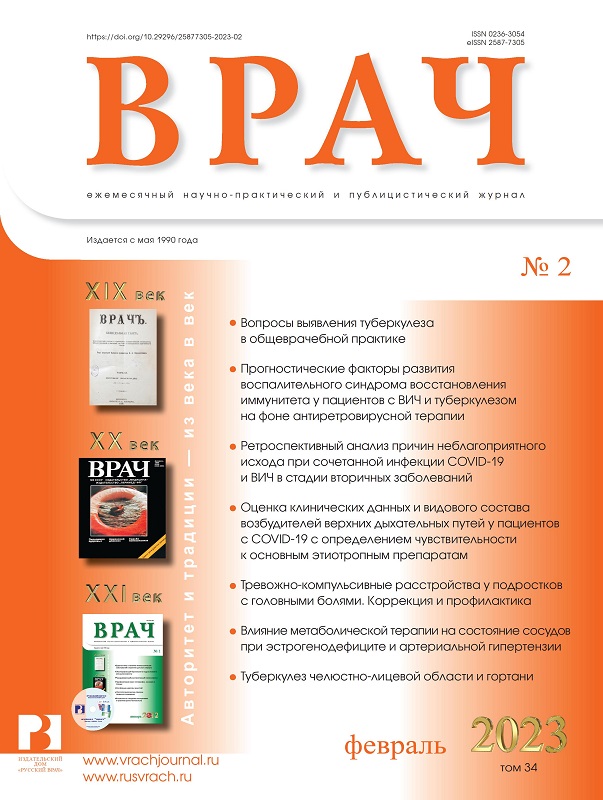Experimental modeling of mandibular defect and analysis of the functional efficiency of the jaw exoskeleton
- 作者: Loktionova M.V.1, Gabbasova I.V.2, Sletova V.A.2, Magomedova H.M.3, Uzdenov E.M.4, Zakharyan V.S.5, Sletov A.A.2,6, Admakin O.I.1
-
隶属关系:
- I.M. Sechenov First Moscow State Medical University (Sechenov University), Ministry of Health of Russia
- Stavropol State Medical University, Ministry of Health of Russia
- Dagestan State Medical University, Ministry of Health of Russia
- Karachay-Cherkessia Medical Academy, Ministry of Health of Russia
- Kuban State Medical University, Ministry of Health of Russia
- Stavropol Territory Clinical Hospital
- 期: 卷 34, 编号 2 (2023)
- 页面: 59-62
- 栏目: From Practice
- URL: https://journals.rcsi.science/0236-3054/article/view/143052
- DOI: https://doi.org/10.29296/25877305-2023-02-14
- ID: 143052
如何引用文章
详细
Modeling of jaw bone defects after bisphosphonate administration is presently an urgent task of oral surgery. Methods for virtual modeling of pathological processes and ways for their elimination are becoming increasingly popular in experimental studies. However, biomedical research with experimental animals, which is strictly regulated by law, does not lose its relevance. The choice of a model for our study has been based on the assumption that bisphosphonate-associated osteonecrosis and jaw defect in experimental animals are identical to human clinical presentations. In addition, this study considers the development of devices for correcting biomechanical problems and positioning the jaw bone fragments. Simulated subtotal mandibular defects are accompanied by restricted mouth opening, malnutrition and, as a result, inhibited habitual functional activity in the experimental animals. This has served as a guide for incorporating the simultaneous fixation of fragments with a multifunctional device, such as with the mandibular exoskeleton, into the protocol of surgical intervention. Positive changes in the early postoperative period have been characterized by restoration of the biomechanical balance of the dentition. The findings provide evidence that it is necessary to modernize the device and to test the exoskeleton in patients with subtotal mandibular defects.
作者简介
M. Loktionova
I.M. Sechenov First Moscow State Medical University (Sechenov University), Ministry of Health of Russia
编辑信件的主要联系方式.
Email: Marinavrach@mail.ru
ORCID iD: 0000-0003-3555-2035
Candidate of Medical Sciences
俄罗斯联邦, MoscowI. Gabbasova
Stavropol State Medical University, Ministry of Health of Russia
Email: Marinavrach@mail.ru
ORCID iD: 0000-0003-3850-4274
俄罗斯联邦, Stavropol
V. Sletova
Stavropol State Medical University, Ministry of Health of Russia
Email: Marinavrach@mail.ru
俄罗斯联邦, Stavropol
H. Magomedova
Dagestan State Medical University, Ministry of Health of Russia
Email: Marinavrach@mail.ru
俄罗斯联邦, Makhachkala
E. Uzdenov
Karachay-Cherkessia Medical Academy, Ministry of Health of Russia
Email: Marinavrach@mail.ru
俄罗斯联邦, Cherkessk
V. Zakharyan
Kuban State Medical University, Ministry of Health of Russia
Email: Marinavrach@mail.ru
俄罗斯联邦, Krasnodar
A. Sletov
Stavropol State Medical University, Ministry of Health of Russia; Stavropol Territory Clinical Hospital
Email: Marinavrach@mail.ru
ORCID iD: 0000-0001-5183-9330
Doctor of Medical Sciences, Professor
俄罗斯联邦, Stavropol; StavropolO. Admakin
I.M. Sechenov First Moscow State Medical University (Sechenov University), Ministry of Health of Russia
Email: Marinavrach@mail.ru
ORCID iD: 0000-0002-5626-2961
Doctor of Medical Sciences, Professor
俄罗斯联邦, Moscow参考
- Basin E.M. Toxic phosphoric necrosis of the facial skull. Abstract of the dissertation for the degree of Doctor of Medical Sciences. М.: I.M. Sechenov First Moscow State Medical University, 2017; р. 36 (in Russ.).
- Berezov T.T., Makletsova M.G., Siatkin S.P. et al. A role of polyamine metabolism in the functional activity of the normal and pathological brain. Zhurnal Nevrologii i Psikhiatrii imeni S.S. Korsakova. 2013; 113 (7): 65–70 (in Russ.).
- Biochemistry. Textbook. Ed. by E.S. Severin. 2nd ed. M.: GEOTAR-MED, 2004; pр. 516–7 (in Russ.).
- Garaeva S.N., Redkozubova G.V. Postolati G.V. Amino acids in a living organism. Kishinev, 2009; pp. 68–85 (in Russ.).
- Litvitsky P.F., Mal'tseva L.D. Protein, Amino Acids and Nucleic Acids Metabolism Disorders. Current Pediatrics. 2015; 14 (1): 95–107 (in Russ.).
- Mikhailov V.V. Fundamentals of pathological physiology. A guide for doctors. M.: Meditsina, 2001; pp. 254–665 (in Russ.).
- Petrosyan A.L., Kutukova S.I., Chefu S.G. et al. Sulodexide as a choice of prevention of bisphosphonate osteonecrosis. Smolensk Medical Almanac. 2018; 4: 118–20 (in Russ.).
- Pauling L., Pauling P. Chemistry. М.: Mir, 1978; p. 389 (in Russ.).
- Manual of general human pathology. Textbook. Ed. by N.K. Khitrov, D.S. Sarkisov, M.A. Paltsev. M.: Meditsina, 1999; p. 213 (in Russ.).
- Ebzeev A.K. Bisphosphonate-related osteonecrosis of the jaw (BRONJ) in cancer patients. Kazan Medical Journal. 2020; 101 (2): 226–31 (in Russ.). doi: 10.17816/KMJ2020-226
- Dunford J.E., Thompson K., Coxon F.P. et al. Structure-activity relationships for inhibition of farnesyl diphosphate synthase in vitro and inhibition of bone resorption in vivo by nitrogen-containing bisphosphonate. J Pharmacol Exp Ther. 2001; 296 (2): 235–42.
- Lee S.-H., Choi S.-Y., Bae M.-S. et al. Characteristics of patients with osteonecrosis of the jaw with oral versus intravenous bisphosphonate treatment. Maxillofac Plast Reconstr Surg. 2021; 43 (1): 24. doi: 10.1186/s40902-021-00310-w
- Schaffer S., Ha Won Kim. Effects and Mechanisms of Taurine as a Therapeutic Agent. Biomol Ther (Seoul). 2018; 26 (3): 225–41. doi: 10.4062/biomolther.2017.251
- Soma T., Iwasaki R., Sato Y. et al. Osteonecrosis development by tooth extraction in zoledronate treated mice is inhibited by active vitamin D analogues, anti-inflammatory agents or antibiotics. Sci Rep. 2022; 12 (1): 19. doi: 10.1038/s41598-021-03966-6
补充文件








